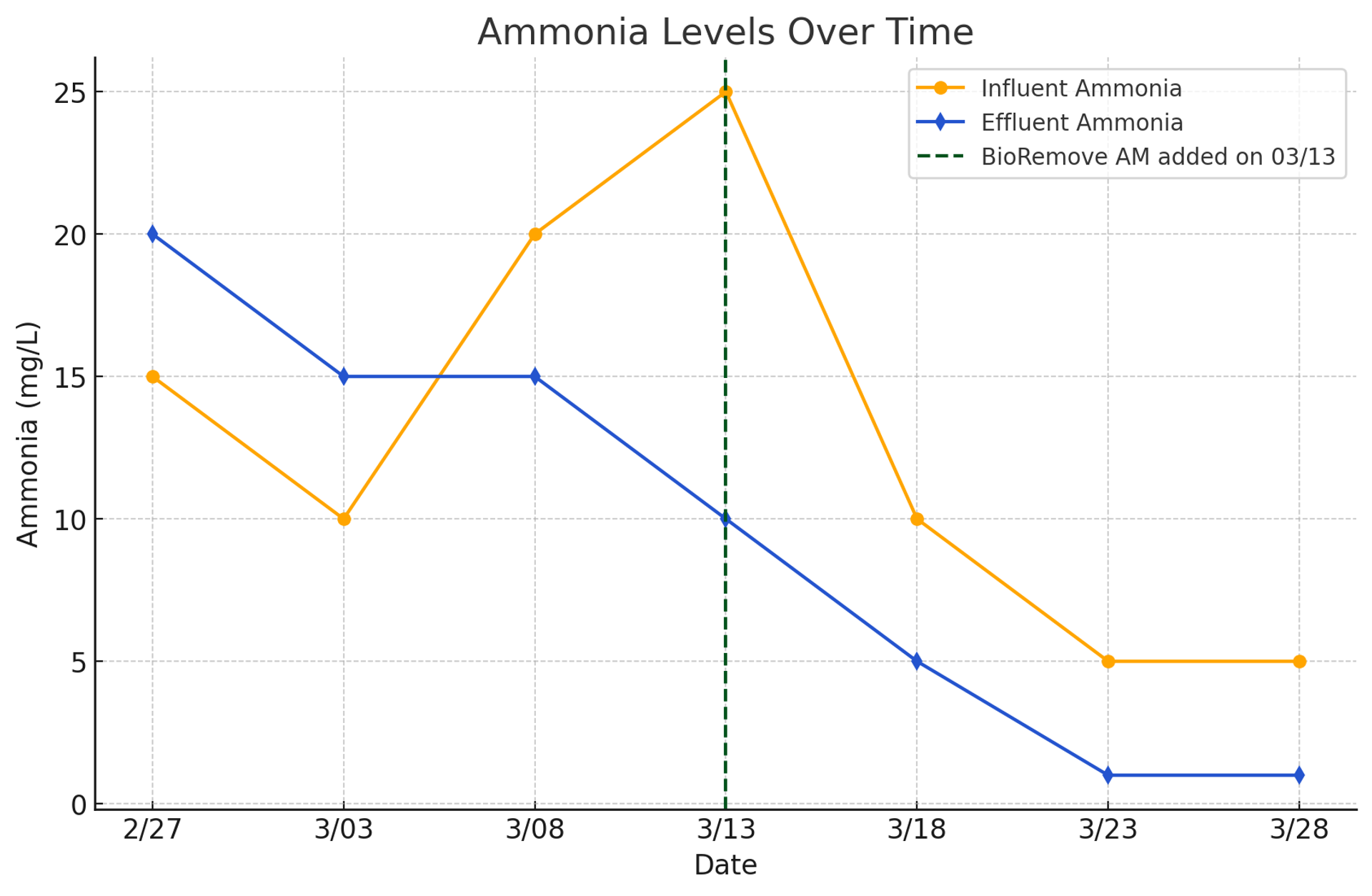
Winter Plant Start-Up with Nitrification
Background
A central New Jersey municipality needed to start up a 1.2-MGD oxidation ditch in late February. The influent was primarily domestic waste, with an industrial contribution containing high surfactant concentrations. The main objective for the plant was to establish a healthy biomass capable of BOD, TSS, and ammonia removal in the least amount of time possible. February is typically the coldest month of the winter in this part of the country, and water temperatures can dip as low as 6ºC (43ºF). The contract operator and the municipality believed the start-up would be slow, particularly for ammonia removal, due to the low temperatures.
The first step in the start-up program was to establish heterotrophic organisms for BOD removal and a minimum sludge age to support nitrification. A contract-operating firm brought in a few truckloads of seed sludge from another municipality. Since water temperatures were low, an additional boost would be needed to achieve a quick start. A plant evaluation was conducted to determine if bioaugmentation could aid in reducing the start-up time.
The Solution
The plant began a two-week bioaugmentation program using 150-lbs of BioRemove COD LT, a microbial blend containing mildly psychrophilic, or “cold-loving”, bacteria to boost the performance of the biomass.
In addition, 25-lbs of BioRemove COD SF was added during this time period to enhance surfactant degradation and to control severe foaming that was experienced during the first few days of the start-up.
Once the sludge age surpassed ten days, the pH, alkalinity, dissolved oxygen, and effluent BOD were reviewed, and it was determined that the plant should sustain nitrification. However, because of the cold temperatures, nitrification had not started and there was concern that it might take several weeks or longer for sufficient natural populations of nitrifying bacteria to develop.
From March 13-18, the plant added 60-lbs of BioRemove AM to reduce the start-up time for nitrification. The product is a liquid concentrate of ammonia- and nitrite-oxidizing bacteria.
The plant began nitrifying within days and achieved an effluent ammonia level of less than 1 ppm within a week. During the start-up, the water temperature never exceeded 12°C (54°F). The system consistently maintained an effluent ammonia concentration of less than 1 mg/L following the successful start-up.


